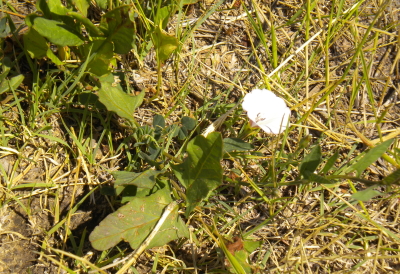Field Bindweed Description
Field bindweed (Convolvulus arvenis) is a List C noxious weed. This perennial was introduced from Europe and became widespread in all parts of the US. Field bindweed control is a challenging task.
Leaves are shaped like arrowheads. Long, vine-like stems are prostate, climbing or forming dense mats. Flowers are white to pink, 1 inch wide with two small bracts located 1 inch below the flower.
Field bindweed is often confused with wild buckwheat. Wild buckwheat can be distinguished from field bindweed by its annual habit, pointed leaves, papery leaf sheaths, and small green flowers.
Difficulty of Field Bindweed Control
Field bindweed is an exceptionally adaptable weed. It can survive in different environmental conditions from drought to moist soils. It is 
Field Bindweed Control
Field bindweed is an aggressive competitor. It competes with native grasses for nutrients, water, and light. Because of its ability to regenerate rapidly, it has to be controlled over several years.
•Cultural Field Bindweed Control
Maintaining healthy pastures and preventing bare spots from overgrazing is one of the best ways to fight field bindweed infestation.
•Biological Field Bindweed Control
There are some biological controls available. Contact CDA for more information.
•Mechanical Field Bindweed Control
Cutting, mowing, or pulling is not effective unless the plants are cut below the surface in the early seedling stage.
•Herbicide Field Bindweed Weed Control
Chemical weed control is most effective when applied during early flowering and when field bindweed is actively growing. The application season is anytime that field bindweed is actively growing which can be as early as May to the end of October.
Even small infestations should be taken seriously and dealt with aggressively. The goal is to exhaust the root system and deplete the soil seed bank. If you find even a small amount of field bindweed on your land, give us a call as soon as possible. We are here to help you with any of your weed control needs. (720)248-0000.

